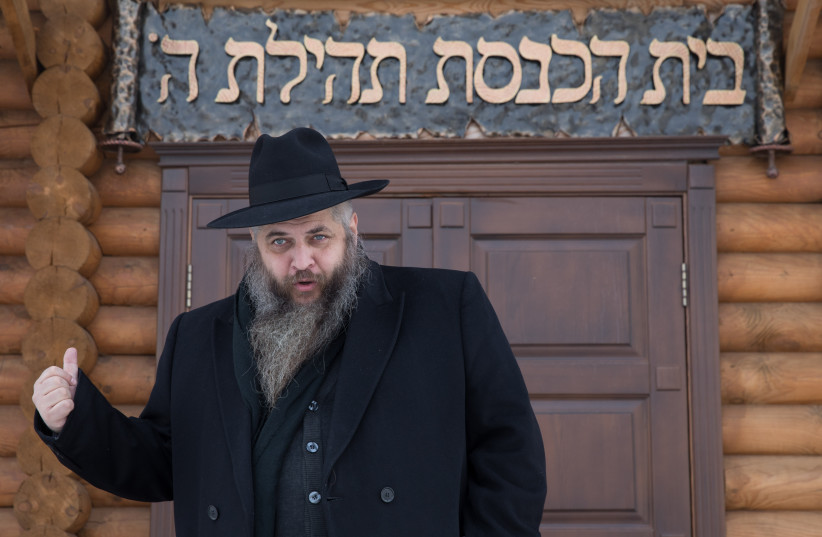It was during the dark days of communism during the 1920s. The Yevsektsiya, the Jewish section of the Communist Party, was leading the attack on Jewish religious life. Backed by the GPU, the secret police, they were shutting down synagogues, closing schools and threatening rabbis. Most of the prominent rabbinical leaders fled Russia with their students. The last man standing was Rabbi Yosef Yitzchak Schneerson, the Sixth Lubavitcher Rebbe (1880-1950).
In 1924, he convened a secret meeting of nine of his closest hassidim, forming a minyan. Together, they made a secret pact to continue the fight to keep Judaism alive in the Soviet Union until their last breaths. In the decades to come, some were killed for their efforts, others were exiled and few emerged unscathed.
The Rebbe himself was jailed and sentenced to death in 1927, only to escape due to international pressure. As Israeli prime minister Yitzhak Shamir said, when speaking of the Mossad’s efforts in the early 1950s to set up clandestine connections to the Jewish communities in Russia from the newly opened Moscow embassy, “In every city we discovered a secret Jewish network operated by the Rebbe in New York.”
For Chabad hassidim, this mindset of self-sacrifice for the sake of Jews and Judaism is imbibed with their mother’s milk. Many of the shluchim whose heroic humanitarian efforts in Ukraine have electrified Jews around the world since the outbreak of the war are themselves the descendants of the hassidim who put their lives on the line during the dark days of communism. While other Jewish groups left Ukraine, they stayed until the last minute, many times relocating to nearby areas to continue the effort to save Jewish communities.
Shlucha Aliza Silverstein, who grew up in New Jersey and together with her husband, Yisroel, rebuilt Jewish life in Chernigov but was forced out when the bombs began falling in their city. Even now, finally taking refuge over the Ukrainian border after a harrowing 20-hour drive with nine of her children through a war zone with nothing but the clothes on their backs, she says, “My primary goal now is to save my community.”

For me, the lesson of self-sacrifice despite the dangers involved was driven home on one blustery March morning in Israel in 1970. It was Purim and a group of us had traveled to IDF bases on the Syrian border to bring the holiday spirit to soldiers during the War of Attrition.
It was an overnight ride from our yeshiva in Kfar Chabad to the Golan Heights. We were going base to base, breaking out hamantashen (Purim cookies) and l’chaim (drinks) for the soldiers.
Finally, we arrived at the front-line outpost, just opposite the Syrian forces. As we were dancing with the soldiers, a bombardment began from Syria. The commander, worried that civilians could be wounded, hustled us into an army truck and ordered our evacuation.
With us was an old Russian hassid who had accompanied us turned to the young yeshiva students. He had spent years in Siberia, sentenced by the communists for operating a Jewish school, part of the Rebbe’s secret network. On top of his white-bearded face was an old-style Russian kasket hat. Despite his age, he had joined the trip because the Rebbe asked his hassidim to bring the holiday joy to the soldiers far from home. For us younger students it was an adventure to leave the yeshiva for a day to the front lines, for him it was a mission.
As we were driving away, he stunned us all with a few simple words in Yiddish: “Today you have an unbelievable zechut (privilege), you had mesirat nefesh b’poel, actual self-sacrifice, for another Jew.” He had spent years in the Russian gulag, yet for him, it was a great honor to put our lives on the line for another Jew.
In 1927, just a few months before his arrest, Rabbi Yosef Yitzchak Schneerson confided to one of his closest hassidim, Rabbi Yechezkel Feign: “There is a difference between the martyrdom of Rabbi Akiva and that of our forefather Abraham. Rabbi Akiva strove to serve G-d to the point of martyrdom. Abraham, on the other hand, strove to fulfill his mission even if it meant putting his life on the line to complete it. He did what he had to do, and if in the course of doing it he had to put his life on the line, so be it. I do not choose the course of Rabbi Akiva, rather that of Abraham. We don’t run toward martyrdom, but we do what we need to and if it entails self-sacrifice, we will do it.”
The Rebbe’s shluchim today continue to live up to that ideal. Young men and women, almost all foreign citizens, could have easily fled for their lives. Instead, they are doing what they have to in Ukraine, even if it means putting their lives on the line.
The writer, a rabbi, is author of the upcoming book, Undaunted, the life of Rabbi Yosef Yitzchak Schneerson. His email is rabbi@ocjewish.com
